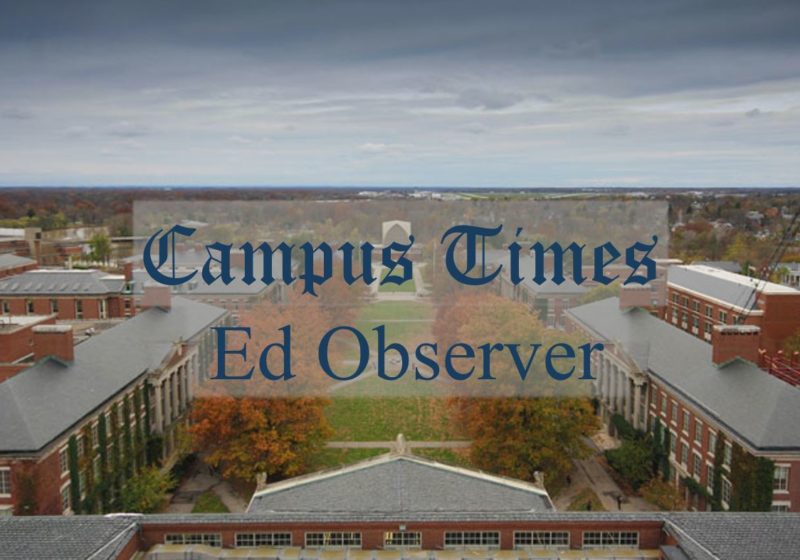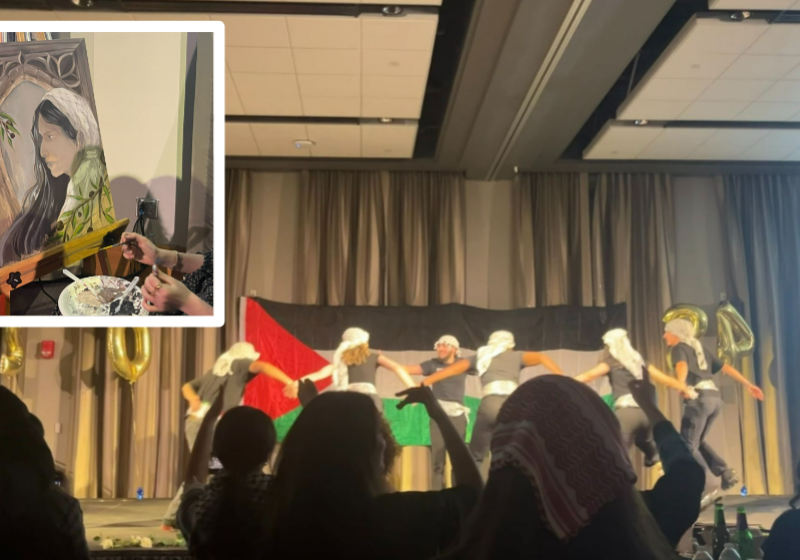The 17th-century contact with European conquerors, the history of genocide and forced migration, and broken political treaties continues to disadvantage Native communities in Western New York and the country as a whole.
The River Campus and the Bausch and Lomb Riverside Park sit on an ancient Native American town, in which the hunter/gatherer Algonquin (Algonkin) native peoples lived. According to the Rochester Alumni Review, the Senecas of the League of the Iroquois possessed this territory at the time of the arrival of the Europeans.
Starting in the early 1920s, the New York Historical Association began erecting historical markers “to designate particular places […] as places of historic interest.”
Originally erected by New York State in 1932, the University re-erected a historical marker dedicated to Native Americans in June 2003. With its inscription “Indian Town: In primitive wilderness here was a large Algonkin village whose bark cabins and tilled fields covered nine acres,” the plaque was one of the local historical markers in Monroe County.
The historical marker, which was located on the east side of River Blvd. is currently missing.
There is still very little known or acknowledged about Native American history, and to date, UR has no department exclusively dedicated to the study of Native American history.
To top this off, there are no landmarks or historical markers, and no public recognition or acknowledgment of Native American ancestry on campus.
UR hasn’t been entirely oblivious to Native American history or the struggles of native people. In Oct. 2010, UR took students on a free 20-minute bus trip to the Ganondagan State Historic Site in Ontario County. UR also hosted a summit on Native American Education on Aug. 2017 and later hosted the College Horizon Program. Recently, the Career Exploration in Librarianship & Mentoring is working on a project to identify materials relating to the Seneca and Indigenous art, culture, and experience in Western New York. Working with students, the project centers on collaborating to identify current collection items for showcase and to develop items for purchase.
But there is much more work to be done. Despite its efforts, UR’s Indian American or Alaskan Native population stood at 0.1 percent in the 2017-18 school year.
There are a number of ways in which UR can participate in honoring the Native American land it stands upon.
The first step is a land acknowledgment, described by Northwestern University as a “formal statement that recognizes and respects Indigenous Peoples as traditional stewards of this land.”
Native American land can also be honored by naming classrooms, the football field, and buildings after the Seneca people. We can erect Native American landmarks on campus, and increase the Native American student population through effective recruiting and retention programs.
We can also create spaces where Native Americans and indigenous peoples are heard and their identities are honored. This might mean hosting annual public events acknowledging the traditional Native inhabitants of the land in collaboration with Native American communities in Western New York.
At its core, this would be a step toward correcting historical injustices, stories, and practices that seeks to erase indigenous peoples’ history and culture. It is a way of honoring the truth and bringing solidarity to Native American history. It will also differentiate us from the complicity of silence that reinforces injustice against people of Native American ancestry.
Overall, through such initiatives many students can be exposed to the names of the traditional Indigenous inhabitants of the lands that they are on, inspiring them to ongoing awareness and action. They will be an expression of gratitude, appreciation, and honor to indigenous people whose territory we are on. Such initiatives will also help bridge the gap of limited historical representation that the Native community still faces. More importantly, there will be an acknowledgment that Native Americans are still here today.
UR could look up to nine colleges in New York State recognized as part of the 200 best universities for Native Americans like Cornell, Syracuse, University at Buffalo, and neighboring RIT, which also sits on Native American land.
True to its commitment to diversity and its ever better motto, UR can surely do better to help preserve, protect, and acknowledge Native American land, traditions, cultures, and people.

